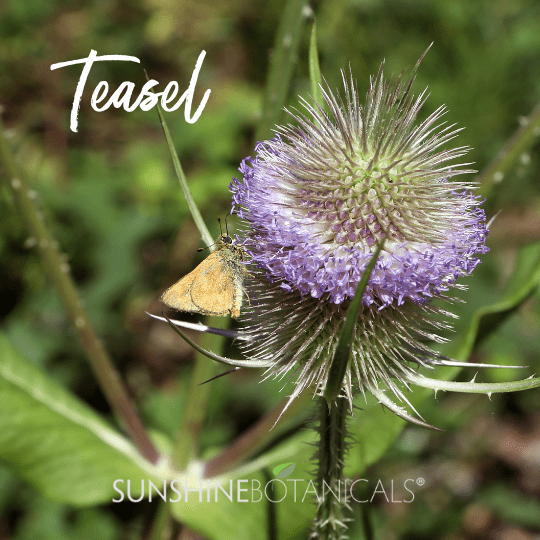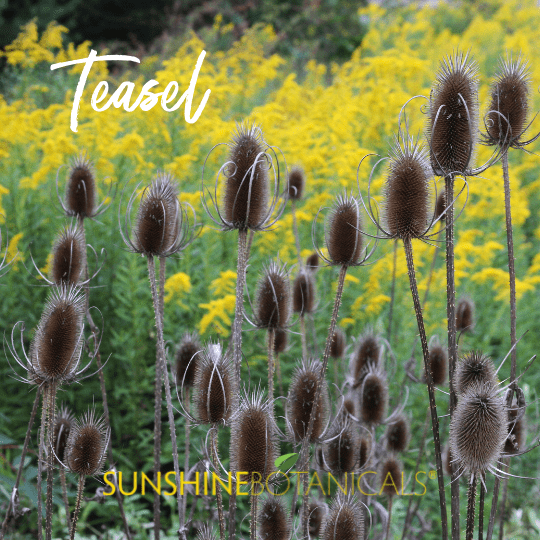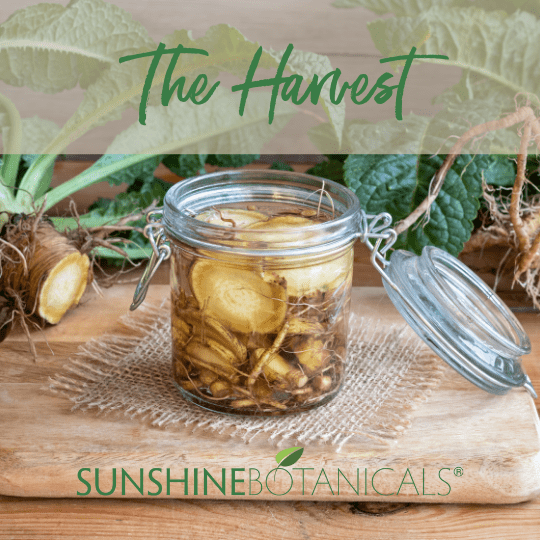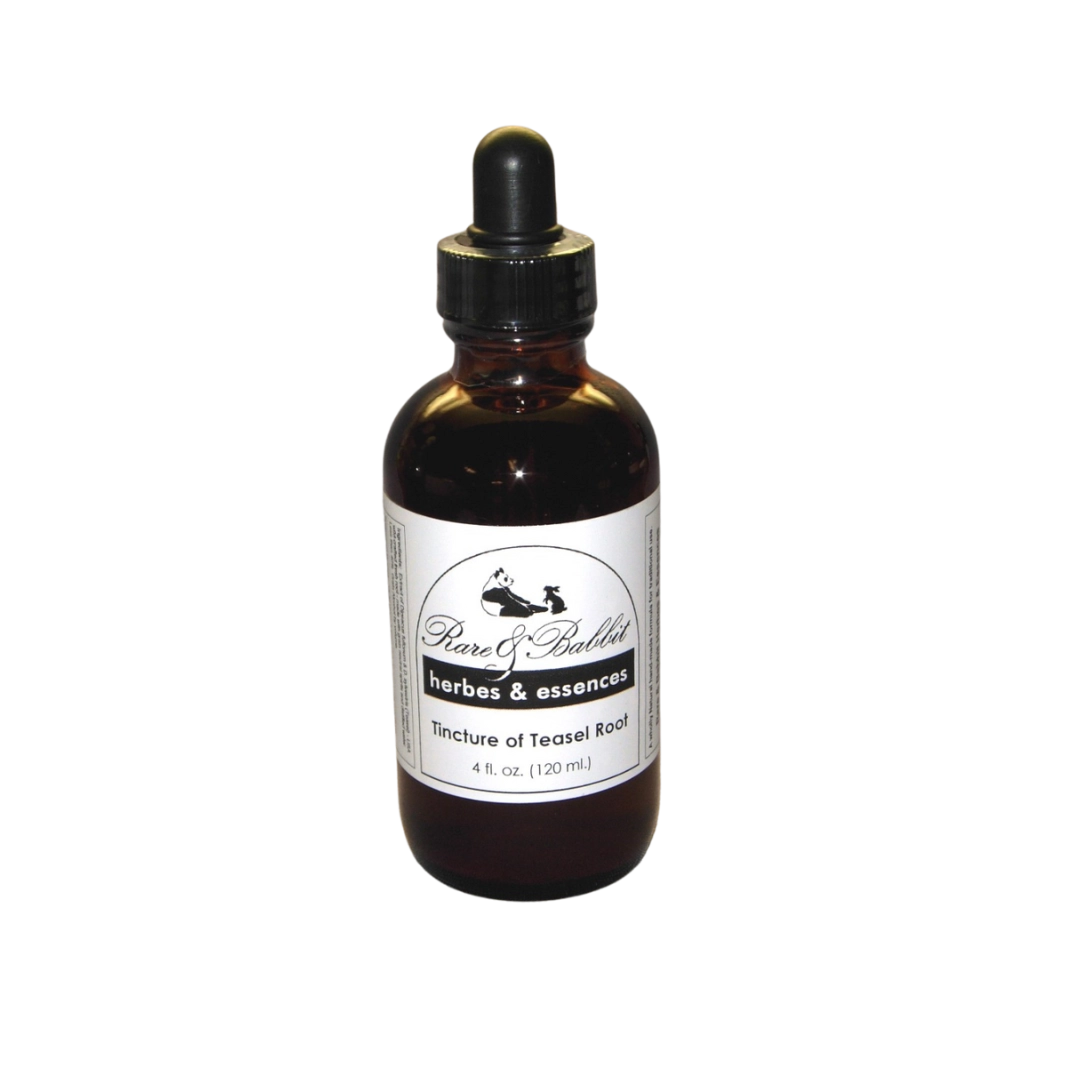If you follow me, you know my passion for herbal medicine, especially in treating aging and problem skin conditions. But, you probably don’t know how a little-known herb helped heal my husband of a debilitating case of Lyme disease. Dr. Philip Fritchey, my partner and co-founder of our brand, was passionate about wildcrafting our active ingredients and making the tinctures that created our skincare formulations. He was so well known for his love of exploration and plant identification; ironically, this woodland lifestyle exposed him to deer ticks that led to his Lyme Disease. What is REALLY incredible about this story is how his journey led him to discover a little-known herb that actually helped him heal from this dreadful disease. (this was totally a God thing!) I felt it was time to share this with you because I know his story may help others who may be dealing with the same complex disease. Let’s take a brief look at Lyme Disease and understand how to navigate it.
So, what exactly is Lyme disease?
In short, it’s a bacterial disease you can get from a tick bite that can lead to flu-like symptoms, inflammation of the joints, and, at its worst, left untreated, even brain damage. The problem is it’s tough to diagnose. The best indicator is a bulls-eye rash that develops around the bite. It is most prevalent in the US, where there are 300,000 cases a year. But confirmed cases in the UK tripled between 2003 and 2015; about 65,000 cases are diagnosed in Europe yearly. But before you shun the great outdoors (ticks love woodlands and long grass), know that awareness and prevention are your best weapons. Lyme can be avoided or, in many cases, effectively treated if you know what to look for and when.


What Are the Symptoms?
Lyme disease symptoms generally fall into three camps: neurological, arthritic, and cardiac. Patients’ most common symptoms are fatigue, headache, joint pain, and heart palpitations. Many people have different variations of neurological Lyme disease, so they can’t think straight, experience memory loss, or even [have] psychological issues like depression and anxiety. The symptoms vary a lot from person to person, though. One person may be tired and have headaches, while someone else might have it and feel great except for a swollen knee. There are a lot of different strains, so symptoms depend on what the tick was carrying when it bit you. This is what makes living with Lyme so difficult. It is not cut and dried, and my husband’s story is typical of so many I had to share this with you.
The time has come to bring my husband’s herbal medicine, specifically his Teasel tincture, into the Sunshine Botanicals family of products so this great little herb can continue to help as many people as possible. (He would be pleased about this.) He will forever be my soulmate and muse, and we’re continuing his work. I will honor him and share his amazing work for the rest of my life.
I want to introduce you to his Teasel tincture, and we continue to make this healing formula precisely as he did, and you can now find this on the Sunshine Botanicals website. Below is an article Dr. Phil wrote discussing his experience with Lyme Disease and how powerful Tease was on his healing journey through Lyme Disease. Yet another reminder that nature is a gift to each of us. Here in his own words, is Dr. Phil’s story.
When Life Gives You Challenges… Lyme-Aid…
A Personal Journey of Discovery
Q: After three years of struggle with a debilitating condition that caused me to quit my job and virtually all my activities – and caused many of my friends to quit me – I was finally diagnosed with Lyme disease. So far, after three months of IV antibiotics, I am having some limited improvement. I have been temporarily pulled from that treatment, though, because it caused my liver enzymes to go crazy. One of my true stand-by-me friends heard about an herb called Teasel, but my local herb shops don’t have it or any information about it. What can you tell me about this plant and Lyme? I need some hope tonight!
A: Lyme is not a disease for sissies, to be sure, and the symptoms of mental fog, chronic joint and muscle pain, and unrelenting fatigue can be very hard for those around you to appreciate or deal with. I have personally been struggling with Lyme disease for some time now. It has been almost six years since my encounter with the tick. The condition has been a roller-coaster experience that has served to humble my smugness, challenge and re-empower my Faith, and impress me with a sense of precious value for the health of body and mind that I never could have imagined – and always took for granted.

I have tried almost every rational protocol that I could find. Despite occasional temporary reprieves, the bug took such hold of me through the Spring and Summer of last year that I truly felt that the fatigue and mental “fog” would force me to stop teaching and writing. I stopped seeing clients personally and could barely muster the energy to keep our skincare business going. The joint and muscle pain was so intense that gardening, field forays, and exercise in general seemed impossible, and, as a result, I put on nearly 30 pounds. It was not a pretty sight.

I had discussed the situation with some students from one of my Herbology classes in Tulsa last Spring, and in September, I received a letter from one of them. He had run across a section in Matthew Wood’s really excellent book, “The Book of Herbal Wisdom.” Wood recorded his limited but positive experience with Lyme, using the root of Teasel (Dipsacus spp.), an herb completely unfamiliar to me. A little internet research showed he was not alone, so I tracked down some of the tinctures. (It is not easy to find. One species of the plant is used in Chinese medicine, but traditional Western herbal history is virtually silent on its use.) Whether from hope or desperation, Wood’s short discourse on it was sufficient to get me to try it.
At the risk of melodrama, I can only say that, so far at least, the result has been nothing short of miraculous. Within three days of starting with the very small dosage recommended by Wood (1 – 5 drops, 3 times daily), the fog lifted, the fatigue melted away, and though it took longer, the joint and muscle pain subsided and has continued to improve since. I feel like my life has been given back to me.
The only negative experience with my treatment came through an enthusiastically reasoned but ill-advised short experiment with higher doses. That quickly promoted a massive intensification of the symptoms – called the “Herxheimer effect” by Lyme sufferers – that just as quickly went away when the dose was reduced again. (Some long-term sufferers even take a peculiar pleasure from that effect – kind of a “getting even” satisfaction from thinking that the bug is suffering for a change. I, for one, take greater pleasure from symptom-free days, and from the conviction that I am winning the long-term battle. For that, I am convinced that only patience and persistence will suffice.)
The only negative experience with my treatment came through an enthusiastically reasoned, but ill-advised short experiment with higher dos-es. That quickly promoted a massive intensification of the symptoms – called the “Herxheimer effect” by Lyme sufferers – that just as quickly went away when the dose was reduced again. (Some long-term sufferers even take a peculiar pleasure from that effect – kind of a “getting even” satisfaction from thinking that the bug is suffering for a change. I, for one, take greater pleasure from symptom-free days, and from the conviction that I am winning the long-term battle. For that, I am convinced that only patience and persistence will suffice.)
So dramatic were the effects that I felt compelled to use some of my newly recovered energy to find the herb in its natural environs. With the help of some USDA distribution maps, a couple of Forest Rangers, and the Forest Service’s Regional Botanist, I located and harvested a supply from a small stand in the Pisgah National Forest in western North Carolina. (It is considered a “rank weed” by them, and I was told to “have at it” when I asked about digging it. Of course, I took care to scatter the seeds well so that the small stand will be somewhat larger next year. One man’s weed is another man’s medicine.)

This is a largely undocumented herb, and there is much to learn about it. Subsequent research shows that the herb’s range in the U.S. almost exactly parallels the range of the Lyme carrying deer tick – an observation that quite comfortably fits my notion of natural cures. (God provides the solution to all our trials, and it is always close at hand – if we only learn what to look for.) I converted my harvest into tincture, and over the winter, I have made it available to students and practitioners working with Lyme and related, often misdiagnosed conditions – chronic fatigue, Epstein Barr, fibromyalgia, ALS, etc. So far, the feedback has been very positive, often equally dramatic. It my sense that the herb may also be well-suited for age-related dementia and memory issues. Please note that the recommended dosage is low – outside the norm – and while I detect no toxicity from it, I would advise following that recommendation.
I have not been able to find out much about this plant’s chemistry – something that doesn’t bother me nearly as much as it does some. (The active constituent is Teasel… works for me.) I’m sure all that will make itself known over time, just as I am certain that the herb and its usable forms will become more generally available as others discover its benefits. With a little diligent searching, it can be found on the Internet – produced by a hand full of individual herbalists around the country. I have also committed to producing as much as we can until more traditional suppliers catch on and catch up.
Six months after starting with the herb, I feel better than I have in a very long time, and, despite the anxieties that stem from my previous experiences with treatment, I have no sense of temporality. I’ve even gotten to where I forget to take it for a day, sometimes two, and have not experienced any regression. I’m not sure yet whether I’m confident that it is a “cure”, but, at the very least, it makes living with the condition gloriously possible.—
Yes, I have been Lyme-free going on 8 years now, and yes, that re-markable herb Teasel was a major factor in that process.
Over the years, I have had many students and users tell me that Teasel was all that was necessary for them to “cure” Lyme. I tend to think that appraisal has, in most cases, been a bit optimistic – not necessarily a bad thing – and misses the mark on Teasel’s actual role in Lyme control and elimination.
Like most chronic and degenerative diseases, Lyme is a very complex disorder. The allopathic approach of “this cures that” is seldom successful, whether “this” is pharmaceutical or herbal. It is, in the end, a matter of whether or not the body’s own defenses can identify and destroy the invader, and rebalance and reinforce against future at-tacks. A weakened immune system invites all manner of opportunistic assaults, including Lyme, while Lyme and its co-infectors set up shop and create all sorts of transient and intransigent manifestations ac-cording to the individual’s ability to resist. Lyme’s spirochete is immensely more talented and adaptive than most common pathogens, and can be a challenge for even the strongest immune system. When Lyme finds a home in a person with generally compromised defenses, the results can become utterly devastating.

We are still not sure exactly how Teasel does what it does, but after more than a decade of observations and conversations, the list of what it does is pretty impressive.
Teasel does have a “kill-off” effect on Borrellia. Evidence for this lies in its ability to provoke a Herxheimer reaction in Lyme sufferers. If it caused a complete die-off, then it would be “’nuff said.” Suck it up and deal with the Herx for a while and move on. Sadly, that’s not the case. In several of its cyst and hidden forms, Borrellia retreats and hangs out to attack another day. While herxing in itself is not harmful, it can be very uncomfortable, especially when the daily rigors of Lyme are already so debilitating. That’s why therapeutic doses of Lyme are best kept at a small, sub-herx level.
Teasel does seem to help repair the physical/neurological destruction done by Lyme infection, and “rewire” damaged connections in the nervous system. Borrelia feeds on collagen in muscles and its close cousin myelin—the insulation that protects nerve fibers and communication. That accounts for Teasel’s often dramatic affect on the joint and muscle pain, fatigue, and mental “fog” that are so characteristic of chronic Lyme. While Teasel does relieve many Lyme symptoms, improving internal communication and generally enhancing energy levels, more importantly, it also gets the immune system back in the fight.
Teasel does seem to make the bug in all its forms more vulnerable to other assaults, whether they be from the body’s own defense tools or from outside aids like immune stimulating herbs and therapies, colloidal silver, and even antibiotics. It is my personal belief and experience that patience, persistence, consistent support of a healthy immune system via diet and lifestyle choices, and, when the
“house is in order,” a selective but overwhelming attack on the entrenched remainders is the most assured path to the ultimate elimination of the Lyme pathogen. The specifics of that path will differ with an individual’s circumstances and choices, and there is no one-size-fits-all protocol, but Teasel’s ability to relieve symptoms, clarify thinking, and improve energy makes walking the path possible.
As for my own case – I took Teasel for nearly three years with almost complete symptom relief, and I would have been gratefully content taking it for the rest of my life if that was what it took to get my life back. There were some swings and setbacks in there that had as much to do with experimentation and occasional complacency as anything. I was always able to get back on track, but I never felt completely free of the bug. My dose was 5 drops taken 3 times daily. That worked for me, but it can vary for others. Typically, the dose range is from 1 to 5 drops 3 times a day. More will usually provoke a herx response.
In that period, my enthusiasm for the herb led me to meet and work with a lot of fellow Lymies, and I got a lot of input about the trials, successes, and frustrations that, in one way or another, affected us all. Ultimately I decided to try one more all out effort to eliminate the bug. Let me be clear – the approach I chose seemed right for me at that point in my quest, and it has helped others, but it is not necessarily ideal for everyone at every stage of Lyme infection.
In addition to the Teasel, the two most powerful Lyme-eradicating tools I learned about were Colloidal Silver, and a little wearable electro-pulse generator device called a Silver Pulser that is made by a Canadian company called Sota Instruments. (The Silver Pulser differs from a Rife machine and other “zappers” in that it provides a unique square wave low-frequency electrical impulse that is applied to the blood-stream at the pulse points on the wrist. You can go to Sota’s website – www.sotainstruments.com – to learn more about it. Google “Bob Beck Silver Pulser” to learn about the person and thoughts behind it.)
- With Teasel, the Silver Pulser, and self-generated Colloidal Silver, my “shock and awe” attack on my Lyme bugs consisted of this:
- Teasel – 5 drops, 3 times daily, every day.
- Pulser therapy – 2 hours daily, 6 days a week – one day off. (It’s small and wearable, so not confining.)
- Colloidal Silver (15-20 ppm) – 2 oz. twice daily, 6 days a week – same day off. (The day off the pulser and C/S allows the body to clear the dead bug trash and find its new center.)
I didn’t set out with a specific time-frame, but I kept that protocol for nearly 4 months – until I woke one morning and realized, for the first time in over 10 years, that the bug was gone, done, finito. Apart from the usual minor aches, pains and memory lapses associated with my years, I have not experienced any Lyme related symptoms since.
There is much more to relate with the on-going saga of this remarkable herb, of course. I hope that all this does bring a bit more clarity to your responses to those who are wrestling with Lyme. It is no small challenge, but patient and consistent use of Teasel can bring light to the fight. It is not the whole answer, to be sure, but it certainly makes up a big part of it. If I can help in any other way, don’t hesitate to let me know.
I hope this information helps you find your solution, and I can’t wait to show you more! Follow us on FB, YouTube, Our Blog, and sign up for our newsletter. Sending much love and blessings!!
My Passion Is Your Solution!
XOXOXO
![]()



Thank you so much.
What is the shelf life, Does tincture of teasel go bad?
Hi Mary, our Teasel has a shelf life of 18 months!
Do you sell teasel tincture
April, Yes, we do sell it! here is the link https://sunshinebotanicals.com/product/tincture-teasel-root/
Just wondering if you have read anything about using teasel tincture to prevent Lyme disease? And for use in animals like dogs?
I made my own teasel tincture a few years ago. At the time, I could not find any information on dosage so I was taking an ounce a day for 30 days…I did not have any heart issues, thanks be to God, but I was completely wiped out for two weeks(weeks 2 & 3 on the treatment). The fourth week I felt amazing and so full of energy. It was wonderful. I would not recommend that dosage for anyone or take that much ever again. Shortly after my treatment I came down with covid-19 and it left me feeling the way I did before I took the teasel. I have recently collected more teasel root and it is brewing…I will treat myself again when it is ready.
Thank you for the information. It is very helpful.
Pamelann, I am not sure. I found this article on line, Perhaps it can help you. https://www.dogsnaturallymagazine.com/natural-treatment-for-lyme-disease-in-dogs/#:~:text=Teasel,very%20safe%20herb%20as%20well.
Wow. I need this!
Let us know your results!